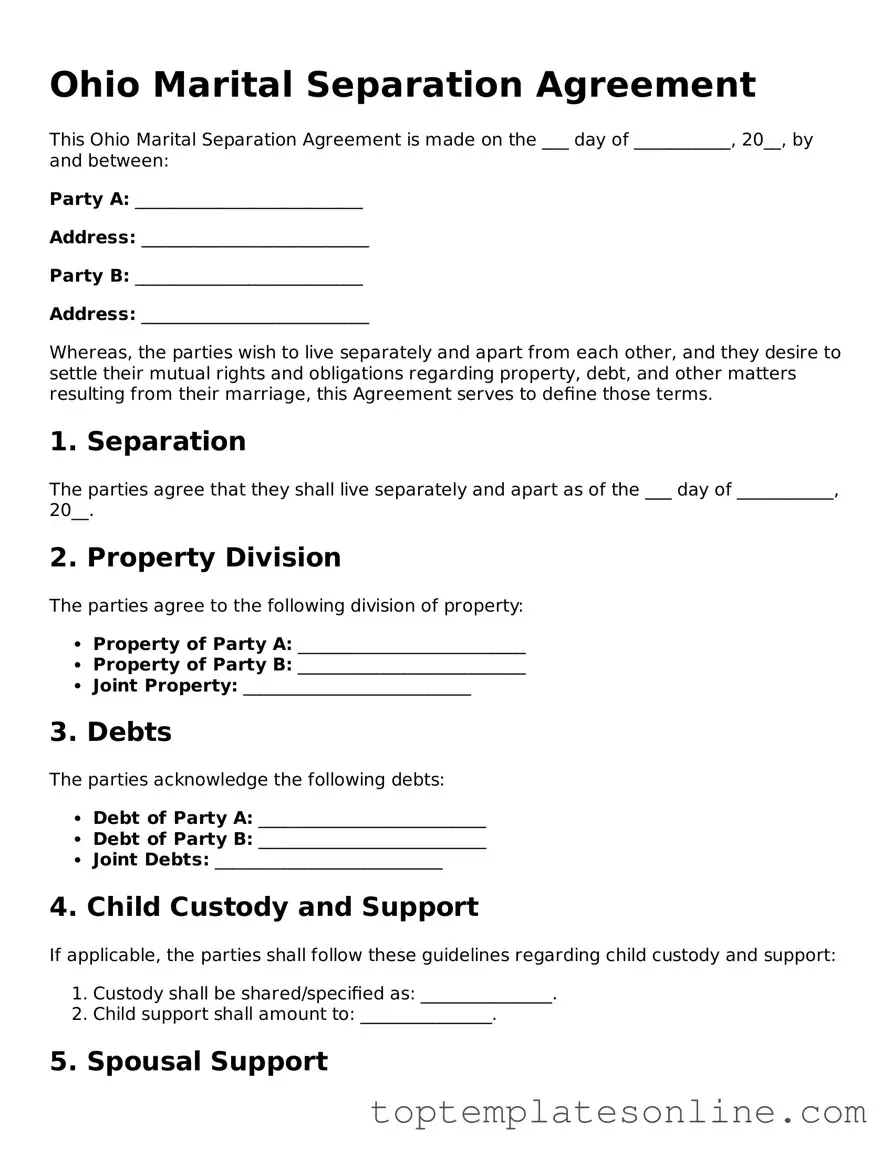Blank Marital Separation Agreement Template for Ohio State
The Ohio Marital Separation Agreement is a legal document that outlines the terms and conditions for couples who choose to live apart while remaining legally married. This agreement helps clarify issues such as asset division, child custody, and support obligations. Understanding this form is essential for anyone navigating the complexities of separation in Ohio.
Customize Marital Separation Agreement Here
